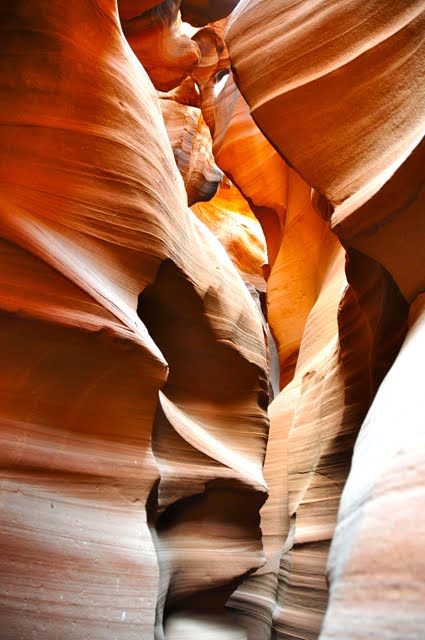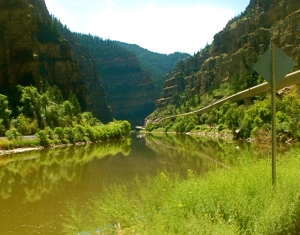This visit requires a ride in a "Shake and Bake" truck...
... up the dry creek bed to the entrance of the canyon...

A long time ago, herds of pronghorn antelope roamed freely in Antelope Canyon, which explains the canyon's name. To older Navajos, entering a place like Antelope Canyon was like entering a cathedral and they would pause before going in to be in the right form of mind. This would also allow them to leave with an uplifted feeling of what Mother Nature has to offer, and to be in harmony with something greater than themselves. It was and still remains a spiritual experience.

Antelope Canyon is one of the most breathtaking and tranquil places on earth. Gently carved from the Navajo sandstone over the course of countless millenniums, the slot canyons are majestic and narrow passages, just enough space for a small group to walk the sandy floor, and for the occasional shafts of sunlight to shine down from above as I captured in this photo...
The Navajo name for Upper Antelope Canyon is Tse' bighanilini, which means "the place where water runs through rocks." Upper Antelope is at about 4,000 feet elevation and the canyon walls rise 120 feet above the stream bed. Lower Antelope Canyon is Hasdestwazi, or "spiral rock arches." Both are located within the LeChee Chapter of the Navajo Nation.
Both canyons contain the hidden "slots" carved from the swirling sandstone, and both drain from the south into Lake Powell, once the Colorado River. The canyons are so narrow in places that one can stretch out his or her arms and touch both sides. Though dry most of the year, Antelope Canyon runs and sometimes floods with water after rains. It is the water, slowly wearing away the sandstone grain by grain, that has formed the beautiful and graceful curves in the rock. Wind has also played a role in sculpting this fantastic canyon.

You must have an authorized Navajo guide to tour the Upper and Lower areas of Antelope Canyon.
Lower Antelope Canyon has a completely different appeal -- more adventurous because you descend into it on ladders/stairs and feel more like a tall cave. Here's my report on Lower Antelope Canyon.














































